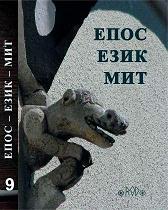UN DOCUMENT INÉDIT: LE TESTAMENT D’ARON BUDAI DE L’ANNÉE 1847
UN DOCUMENT INEDIT: TESTAMENTUL LUI ARON BUDAI DIN ANUL 1847
Bien que Aron Budai (1763-1847) représente l’une de plus importante personnalité politique et religieuse roumaine, on a écrit peu sur sa vie et son activité. Pourtant quelques auteurs du siècle passé, parmi ils sont: George Bariţiu, Constantin Papfalvi, Sava Popovici et Emilian Cioran ont lui consacré des articles. Avec l’occasion des recherches scientifiques dans le cadre de l’Archives de l’État – le Département Deva, par un hasard heureux, nous avons découvert un document inédit, d’une excepţionnelle importance: le testament de Aron Budai. Le Testament a été fait dans le 20 avril 1847, et il nous permette de compléter avec de nouveaux informations, inédites, la biographie de cette complexe personnalité, politique de Transylvanie. Par le testament nous connaissons des dates sur la famille Budai du village Cigmău (le département Hunedoara). Dans le même temps le testament précise les noms des héritier de cette considérable héritage assamblé de Aron Budai au longue de sa vie. En même temps on peut détacher des prévoyances du testament, de nombreuses services que Aron Budai les a fait à la nation roumaine de Transylvanie.
More...
